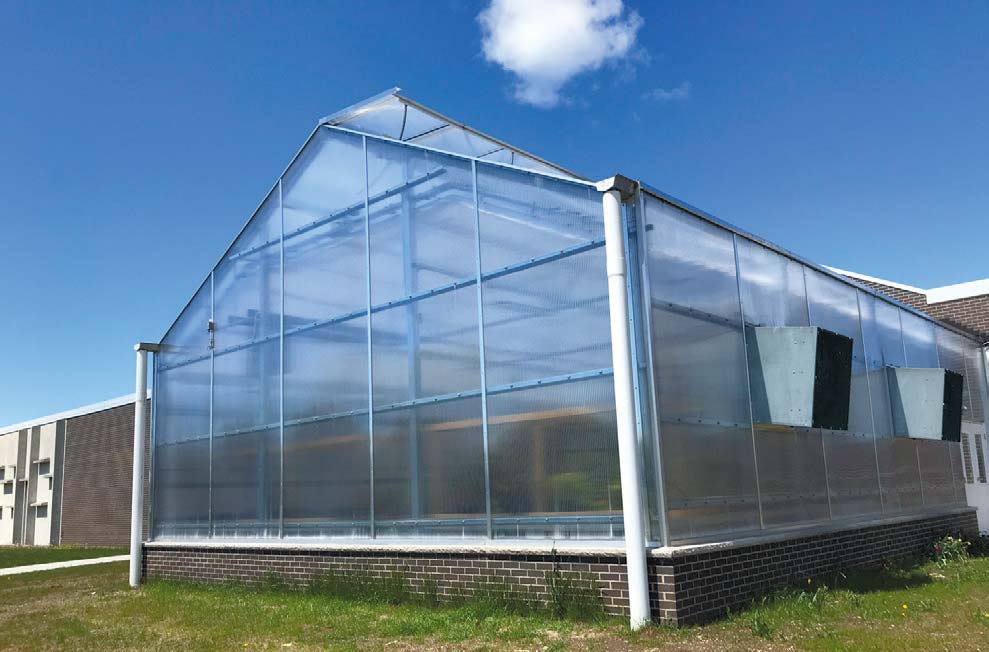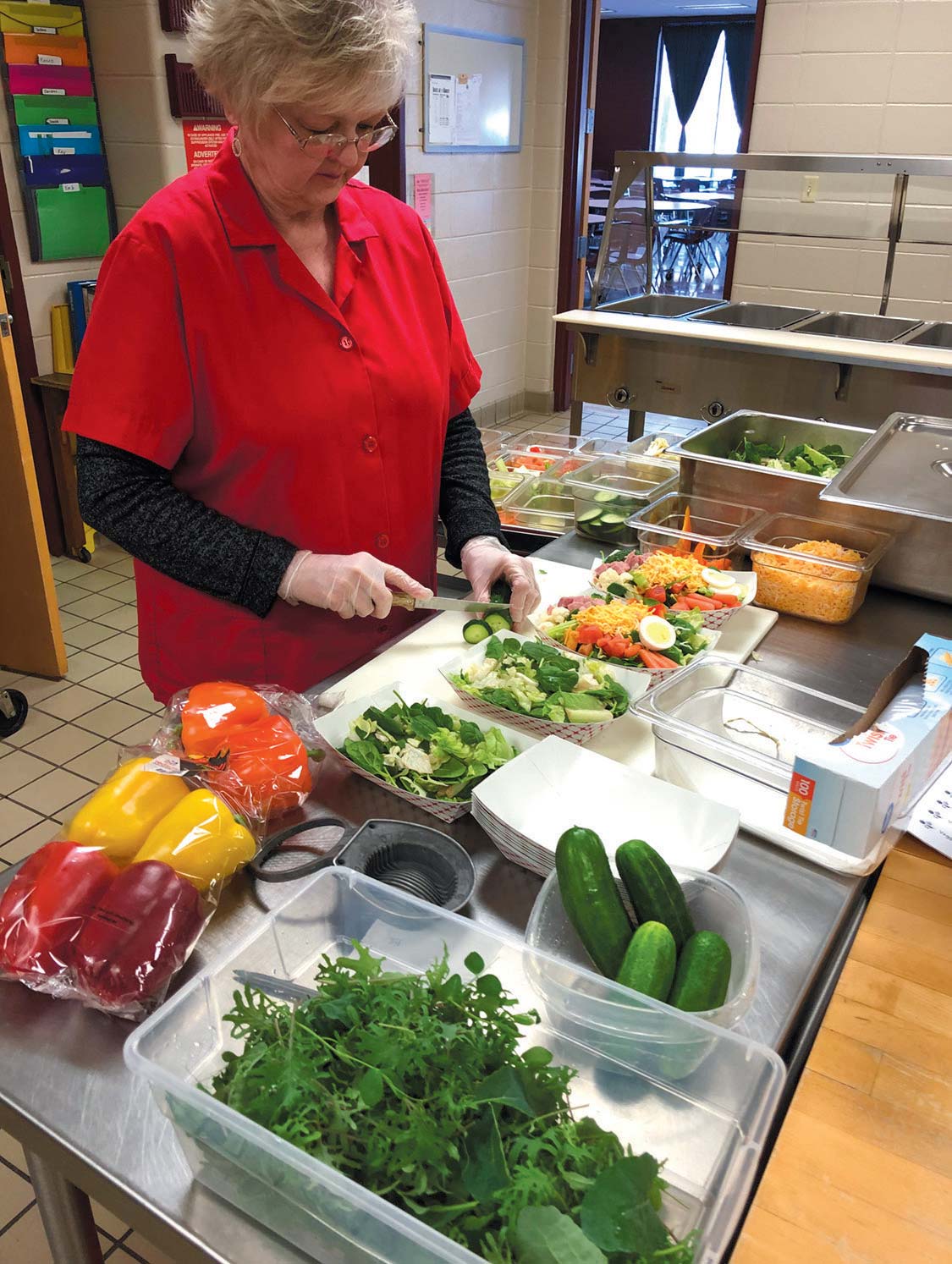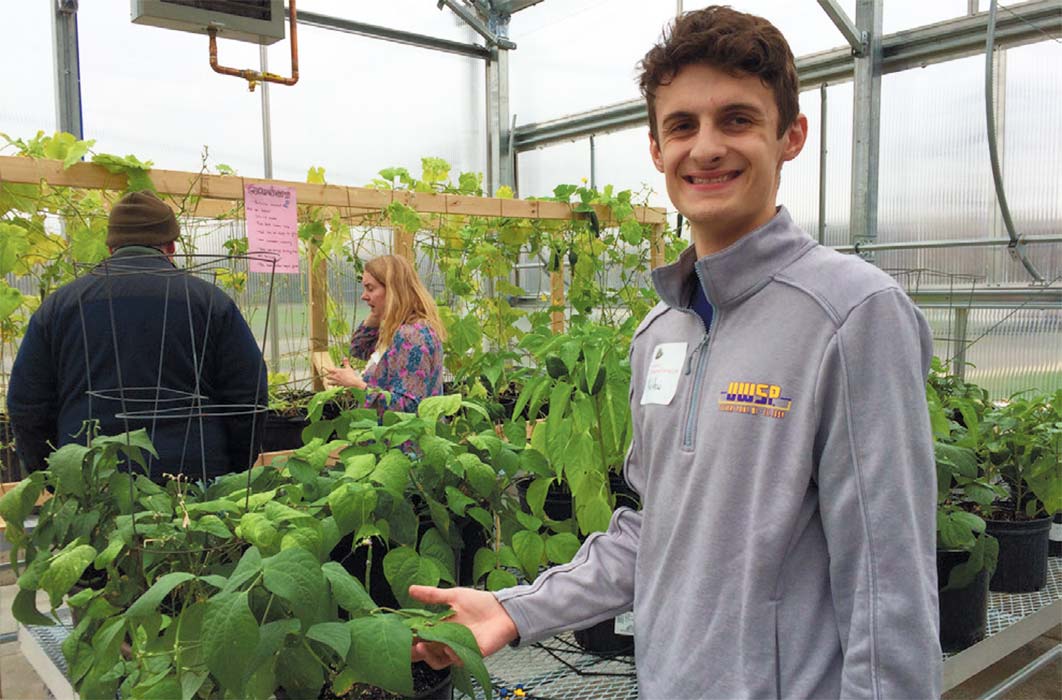New School Greenhouse Supplies Fresh & Flavorful
SUSTAINABILITY COURSE HAS ALSO SPROUTED FROM PROJECT
Snow stood more than 18 inches high along the edges of ice-dotted sidewalks in front of Sturgeon Bay High School. Ideal growing conditions inside the school’s recently constructed greenhouse nurtured plant growth and cultivated an environment where students not only experienced hands-on learning about agriculture and sustainability, but also the literal meaning of “greenhouse (farm) to cafeteria table.”
In February, the first produce harvested from the Waseda Farms Growing and Learning Lab at this certified “Green and Healthy School” included two fresh pounds of kale and six pounds of cucumbers that food service staff readily washed and served on oriental chicken salads. Just one month later, the yield included more than 27 pounds of greens and 48 pounds of five different types of cucumbers, as well as fresh tomatoes, green beans, spinach and pea shoots.
Jenny Spude, food service director for Sturgeon Bay Schools, is a registered dietician who has been teaching about nutrition since moving back home to Door County with her family. By utilizing her federally-funded food account, she can buy produce from the greenhouse and those dollars go back into the greenhouse fund to pay for expenses such as soil, lights, water and other necessities.
 Greenhouse at Sturgeon Bay High School.
Greenhouse at Sturgeon Bay High School.
 Darlene Peterson preparing food from the greenhouse for school lunch.
Darlene Peterson preparing food from the greenhouse for school lunch.
“The bread and butter of this project has been the sustainability. I have fresh food that is grown by and for the students of our district, and school lunch dollars are used to purchase the bounty,” Spude said. “The students are our customers. They take an interest in where their food comes from, but even more importantly, they want something that tastes amazing and fresh!” She can now buy food from “down the hall,” serve something that is both organic and fresh, and purchase it within a price point that makes sense for the school. She added that, if the same types of organic items were purchased from a supplier, the food would be transported some distance and most likely picked before fully ripened or ready. While it does take a bit more work from kitchen staff to clean, cut and prepare the vegetables, the faces of satisfied students and staff make the effort worthwhile.
All-organic practices are used within the greenhouse. Under the daily direction of volunteer Master Gardener Deborah Javurek students are responsible for prepping soil and mixing organic material, planting, watering, and preparing seeds for the next generation of plants.
“Our greatest success has been the community support we have received ...” — Jenny Spude
“There is a big difference between growing to harvest, which is what is done here in the greenhouse, and growing to plant,” said Javurek, who has been a Master Gardener for 15 years. “The greenhouse environment is so much different than the outdoors. My most important role this past school year was knowing how to get things started, including potting, monitoring and transplanting. We didn’t have all the answers this first year, but from my training we learned how to get the answers.”
With the availability of the greenhouse, a new semester elective course developed. Taught by Family and Consumer Science teacher Natalie Townsend, a Sustainable Living class is the venue for high school students to learn about agriculture and sustainability. One focus is on how to plan for food production, including preparing seed for the next generation and, once harvested, how to preserve fresh food by canning, dehydrating, freezing or fermenting it.
The idea of a greenhouse first sprouted three short years ago when Townsend, along with Technology and Engineering teacher Seth Wilson, attended a conference to explore ways to enhance Sturgeon Bay School’s participation in the Wisconsin’s Green and Healthy Schools Program, which provides resources, recognition and certification to schools in nine key areas. The greenhouse initiative fit into the health and wellness category.
Its vision quickly took root. A steering committee was formed comprised of school staff: Townsend, Wilson, Spude, Brian Pahl and Craig Kiekhaefer; community experts including Max Martin, Jeff Lutsey and Javurek; and high school student Georgia Feldman. Each had a background or experience to share, and together they looked into the greenhouse’s feasibility, location and potential uses. Built on the front of the school due to its ideal southwestern exposure and access to existing electrical and water infrastructure, the greenhouse footprint covers 1,200 square feet.
“Our greatest success has been the community support we have received,” Spude said. “Families and businesses in our community understood our story and how we were going to use the greenhouse and why we needed to make it a reality in our school. Even in our local town, some students are either not exposed to the idea of growing food or the feasibility of growing something does not exist. Our community cared, and the Waseda Farms Growing and Learning Lab was 100% funded by donations.”
Plans for next year include growing more of what has been most successful and appealing to the kids and to utilize the greenhouse space more efficiently based on different types of plants and the length of their growing season. Just half of the potential space was used the first year. With hands-on practice provided at the greenhouse, another goal is to expose more grades to the benefits of sustainability.
“We’ve fulfilled what we planned to do the first year as to how and what we have been able to harvest,” Spude said. “It’s been a learning year for all involved.”




